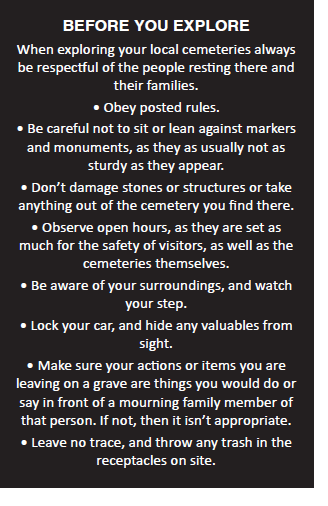Wandering through a cemetery: It might sound morbid or just downright creepy to some, but others have discovered these overlooked settings can offer a respite of solitude, peaceful contemplation, beauty, and even an intriguing discovery or two. Many people rediscovered the lure of cemeteries as a place to spend time during the recent pandemic, enjoying the outdoors in a setting much less busy than parks.
Galveston Island has countless ways to appreciate its colorful past, including tours of grand homes, museums, a tall ship, and a lovingly restored Victorian-era business district. But many residents and visitors to the island pass by interesting windows into the past every day without giving them a second glance - historic cemeteries.
Though the reasons to visit these sites are as varied as the people who meander through their grounds, one of the most obvious reasons is history. The chance to walk through time, realizing each stone represents the story of an individual or family who lived here and contributed to making Galveston what it is today - whether as a politician, parent, grocer, soldier, doctor, servant, sailor, preacher, or laborer - is a draw to any history buff.
Cemeteries are the one place visitors can encounter generations of people representing different eras and classes of Galveston’s past, including storm survivors and victims, those lost to yellow fever or Spanish flu epidemics, horse and carriage or railroad mishaps, and even the lucky ones who passed peacefully in their old age.
The Broadway Cemetery District alone includes veterans of every battle since the War of 1812. Graves of both Union and Confederate soldiers, many of who survived the war, but also those who were not as fortunate.
For art lovers, a walk through a cemetery can offer the unique opportunity to explore it as an outdoor museum. Some of the island’s wealthy families brought talented sculptors from France and Italy specifically for the task of carving family monuments, as well as utilizing skilled local craftsmen that included members of Galveston’s Ott family.
Large obelisks, sculptures of angels, and mausoleums mark burial sites of families who could afford the luxury, but simple, handmade markers by those of meager backgrounds are equally touching and fascinating.
Elaborate mausoleums, many with stained glass windows and intricate details, were often designed by the most respected architects of their day.
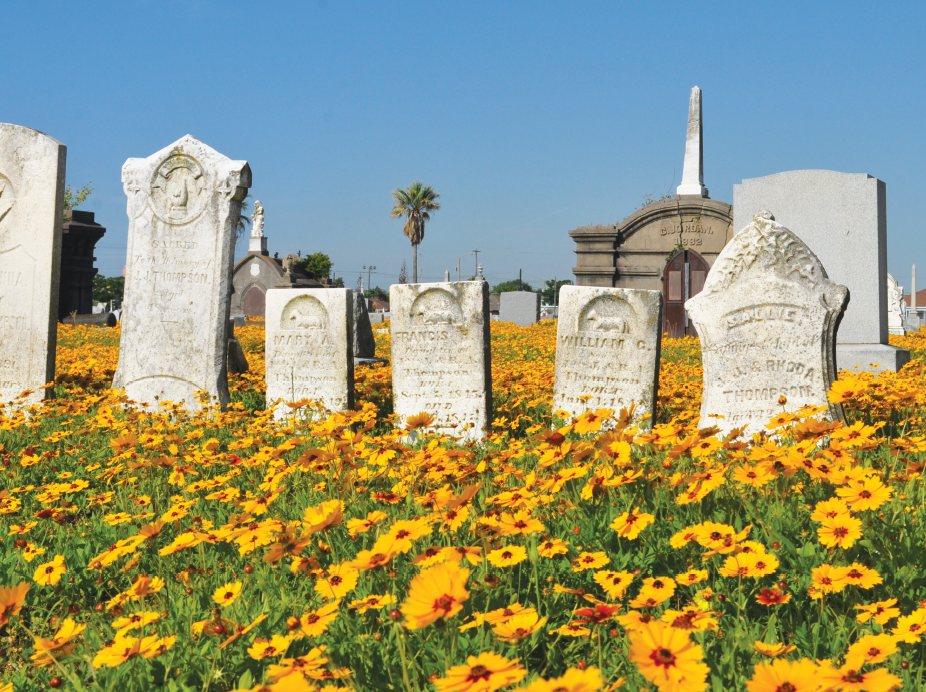
The beauty of these places is one of the reasons that plein air artists gather in the cemetery district when visiting Galveston, enjoying the chance to capture the beauty of the patient, unmoving subjects. Even local artists themselves, like Boyer Gonzales and Maria Cage Kimball whose work we admire to this day, now rest there.
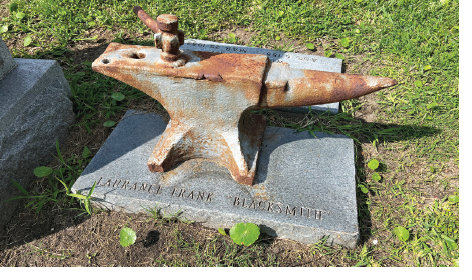 The sites are also wonderful places to practice photography offering statuary, nature, and ever-changing light and shadows.
The sites are also wonderful places to practice photography offering statuary, nature, and ever-changing light and shadows.
Those who love a good mystery will enjoy exploring Victorian symbolism seen in cemeteries as a secret code to reveal details about the departed or their life.
The romantic at heart might sigh at the Victorian icon of clasped hands signifying one person welcoming another into heaven, or a calla lily indicating marriage and fidelity.
Others can use them as a tool to explore their family genealogy, through symbols that tell of membership in various societies, religions, or even their personalities.
Even wildlife enjoys the tranquil habitat of these sites, making them an excellent place for birdwatching. The local ibis can often be seen strolling the grounds to picnic on insects and occasionally perching atop a tolerant angel’s head.
During the 19th century visiting cemeteries, whether or not one’s departed family members rested there, was not only accepted practice, it was quite social. A cemetery was one of the first places where upper- and middle-class women of that era could wander unchaperoned.
Women happily took advantage of this liberty, and walked and talked with their friends there as they would in any public park, without worrying that men would bother them. People also visited in family groups, bringing picnics and books to read to themselves or aloud to each other, and studied statuary and the poetry of epitaphs in the quiet settings.
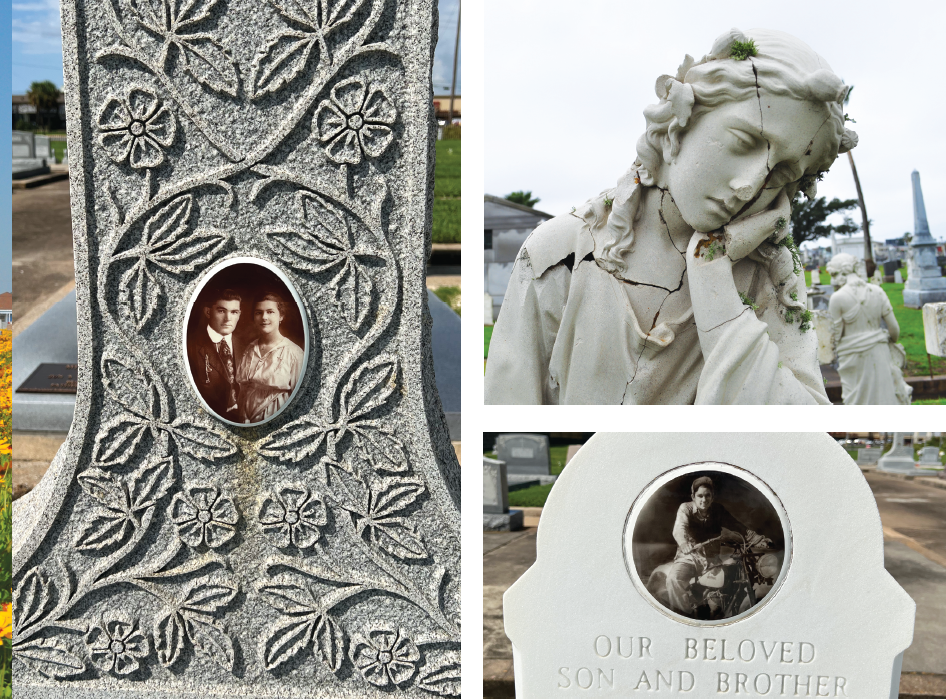
THE CEMETERIES
The Broadway Historic Cemetery District is made up of seven different cemeteries. Three are privately owned and operated (Trinity Episcopal, Old Catholic, and Hebrew Benevolent Society), and four (Old City, New City, Evergreen, and Oleander) are owned by the city. Old City is the oldest cemetery on the island, established in 1839, after a tragic yellow fever epidemic.
The district is especially inviting each May when five of the seven cemeteries in the district allow wild coreopsis flowers to take over the area, covering it in a field of brilliant yellow. It is the one time of year that nature lures photographers and curious passersby into an area they might not otherwise venture.
Old Catholic Cemetery, established in the Broadway District in 1844, includes the resting place of city founder Michel Menard and his wife Rebecca.
With a little effort, it’s possible to find dozens of markers for individuals and families who have lent their names to streets, buildings, towns, and counties in Galveston and across the state: Winne (namesake of Winnie Street), Sealy, Hitchcock, League, Magnolia, Willis, Hutchings, and Menard are just a few.
Fans of the island’s wonderful architecture and attendees of home tours might be interested to find the final resting places of owners of some of Galveston’s grandest houses and businesses in local cemeteries such as the Greshams of Bishop’s Palace, the Browns of Ashton Villa, The Willis and Moody families of Moody Mansion, and the Sealys of Open Gates. The monuments to their memories often echo the grandeur they enjoyed in life.
Lakeview Cemetery is seemingly commanded by an imposing statue erected in memory of members of the Woodmen of the World lost in the 1900 Storm, but is more famous as the resting place of David Burnet who served as interim president, vice president, and secretary of state for the Republic of Texas.
Municipal and Memorial Cemeteries, including the new potter’s field (a burial place for those who could not afford a burial plot or marker), although in disgraceful disrepair offer a place to contemplate many of the “everyday” citizens and veterans who built present day Galveston and then were promptly forgotten.
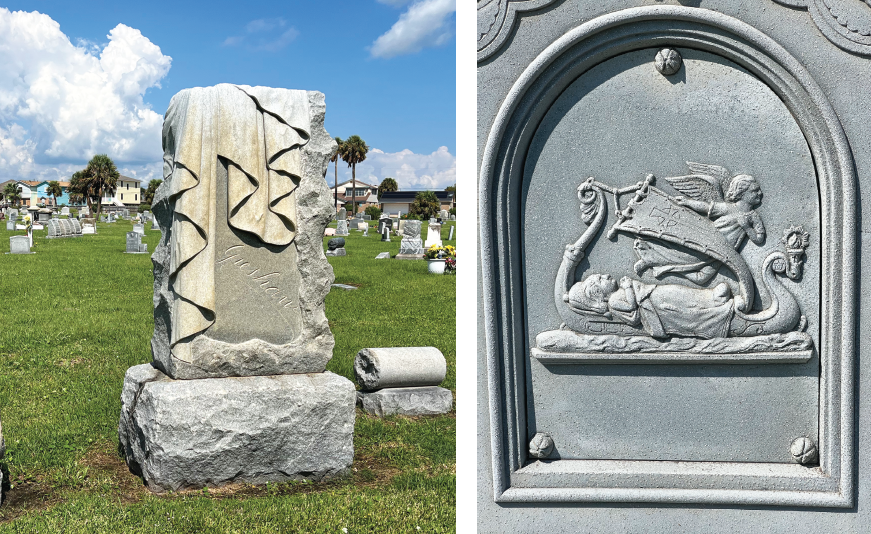
Local cemeteries share a variety of names that remind visitors how important immigrants were in Galveston history: Scottish, Irish, Hispanic, Italian, Greek, Japanese, German, Russian, and many more.
Calvary Catholic bears a cenotaph for the nuns (mostly foreign born) lost in the 1900 Storm, as well as a striking Italian Vault (mausoleum) built by the Italian Benevolent Society.
Meander through the beautiful memorials of B’nai Israel, Beth Jacob, and Hebrew Benevolent Society cemeteries to find names of families with connections to some of the island’s most important charitable work, immigration stories, businesses, and community service.
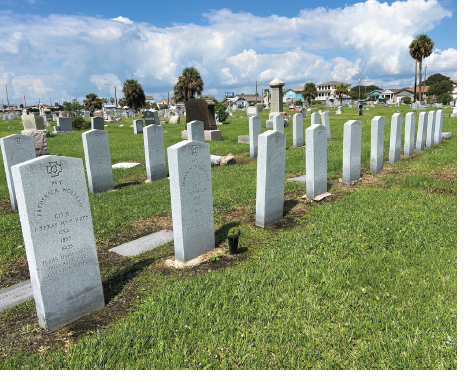 Galveston’s 1914 Greek Orthodox Cemetery is the only exclusively Greek Orthodox Church cemetery in Texas. The resting place of some of the first Greeks in the state, many of the markers include elaborately carved Greek inscriptions honoring the legacy of their heritage.
Galveston’s 1914 Greek Orthodox Cemetery is the only exclusively Greek Orthodox Church cemetery in Texas. The resting place of some of the first Greeks in the state, many of the markers include elaborately carved Greek inscriptions honoring the legacy of their heritage.
Not all of Galveston’s cemeteries sit within sight of well-traveled roads. Rosewood Cemetery, the island’s first burial ground designated in 1911 exclusively for African-Americans, sits partially obscured by the multi-story buildings that now surround it.
Years of neglect, weather, and vandalism have reduced the remnants of the burial ground, now owned by Galveston Historical Foundation, to a bare representation of the number of burials that were once apparent. Plans are underway to construct a viewing deck that will provide visual access to the historic site without endangering the cemetery or its visitors.
The Ursuline Cemetery on the grounds of Holy Family Catholic School contains almost one hundred marked gravesites of members of the order.
Galveston’s only park cemetery, Magnolia Grove, was designed and built in the Victorian-era and included 100 varieties of trees and flowering shrubs in addition to stunning monuments. Its loss (it now lays partially under Scholes Airport runway and Moody Gardens Golf Course) reminds us to care for these special spaces we still have available to enjoy.
Several private cemeteries, many of them unmarked, exist on land once used as family farms and ranches on the west end of the island. One of these is a small plot with three marked graves (including that of World War II veteran Maco Stewart, Jr.), that once belonged to the Stewart family who established the Stewart Title Company. The cemetery, now owned by a corporation, is in an advanced state of disrepair.
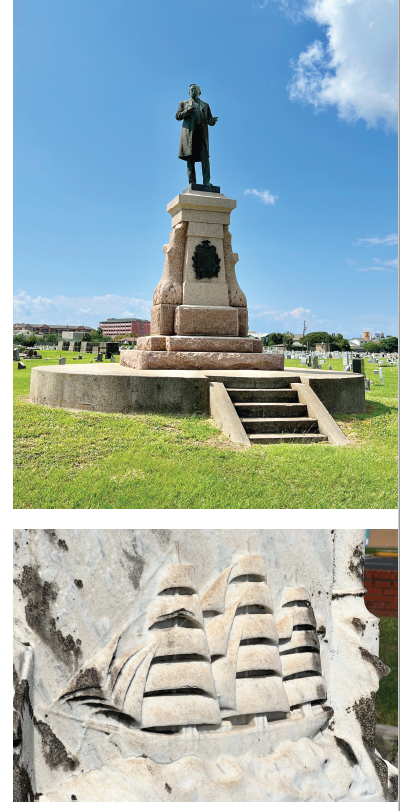 Of course, there are countless more stories to explore. A good way to start is to take a guided tour with an expert who respects the history of a place. Someone familiar with the grounds is often able to point out fascinating things that wouldn’t be apparent during a casual stroll, and share stories of the individuals and families.
Of course, there are countless more stories to explore. A good way to start is to take a guided tour with an expert who respects the history of a place. Someone familiar with the grounds is often able to point out fascinating things that wouldn’t be apparent during a casual stroll, and share stories of the individuals and families.
People are often surprised that a visit to a cemetery can be a family friendly activity, “introducing” children to people who actually took part in the stories they study in history class and teaching them respect for the past. It’s even possible to conduct respectful scavenger hunts for the earliest birth date, number of angels, or types of flowers.
So why take a walk a cemetery? Reflection, solitude, art, history, stories, culture, the poetry of epitaphs, and nature - not to mention exercise.
The attraction of historic cemeteries as a place to spend an hour or so may not be apparent to people who view them with a wary eye, but those who take the time to explore them are richly rewarded.
When exploring your local cemeteries always be respectful of the people resting there and their families.
